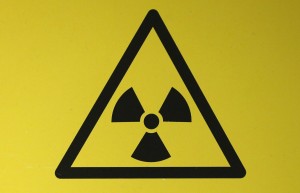Texas Nuclear Reactor Restarts, Four Months After Fire
From the Texas Tribune:

Photo by REUTERS /SUZANNE PLUNKETT/LANDOV
Four months after a fire shut it down, a nuclear reactor at the South Texas Project in Bay City is being restarted. That is the second prolonged shutdown at the plant in two years, prompting critics to demand closer scrutiny of the operation.
Four months after a fire in January, one of Texas’ four nuclear reactor units is being restarted, bringing to an end the unit’s second prolonged shutdown in two years.
“We’re bringing the unit back up,” said Buddy Eller, a spokesman for the South Texas Project, the enormous Bay City nuclear plant where the problems have occurred. The 1,350-megawatt reactor unit, known as STP Unit 2, should be producing 100 percent power by sometime Tuesday, according to Eller, who spoke with the Tribune on Monday afternoon.
The fire in January occurred at a transformer in the electrical switchyard outside the reactor. The fire was fueled by oil, lasted about 10 minutes and was immediately put out by the plant’s fire brigade, Eller said.
The fire department in Bay City headed to the scene, but plant officials turned them back, saying they had the fire under control and did not need additional help, according to a representative of the Bay City Police Department.
No one was injured in the fire, according to Eller, who said that reports of 50-foot flames were “incorrect.”
The cause of the fire is still under investigation, according to both the Nuclear Regulatory Commission and STP. However, Eller said it was safe to turn the unit back on.
“Our focus is to ensure that we put safety over [power] production,” he said, adding that the outage had given the company time to perform additional maintenance tasks. The turbine blades and bearings were damaged when the reactor shut down quickly during the fire, he said.
It was the second major incident for STP 2 in two years. In November 2011, the reactor went down for five months after it tripped, or shut down, while it was at 100 percent power, according to an NRC web report. The cause was a malfunction of the main generator, due to a ground fault.
In neither incident was there any danger of radioactive material leaking, Eller said.
The South Texas Project plant, which began operating in the 1980s, is jointly owned by NRG Energy, which has a 44 percent stake, and two municipal utilities. CPS Energy, the San Antonio electric utility, owns 40 percent, and Austin Energy owns 16 percent. Texas’ other nuclear plant, the two-reactor Comanche Peak facility, is located in Glen Rose, near Fort Worth. The two are among the youngest nuclear plants in the country.
Environmentalists concerned about nuclear power say that the fire, in addition to the generator problem in 2011-12, has created concerns about the plant’s ability to operate safely. The federal licenses for the STP reactors expire in 2027 and 2028. Public hearings on the license extension took place in Bay City in January, just days after the fire.
“Relicensing should be halted while a serious, in-depth examination occurs,” said Karen Hadden, executive director of the Austin-based SEED coalition, which advocates for sustainable energy. “I think it’s becoming increasingly unreliable, and it’s costing us money to fix it.” She said it was difficult to get information about the plant’s problems.
Eller would not provide an estimate of the cost of fixing the plant. He said the plant was working through the process with its insurance company. NRG Energy said it would not discuss the cost of buying replacement power during the months that the unit was shut down, as such information is proprietary. Efforts Monday afternoon to glean cost figures from the plant’s municipal-utility owners, CPS Energy and Austin Energy, were unsuccessful.
Over the past four months, STP has taken apart the turbine generator and inspected it thoroughly, Eller said. The generator — which had been refurbished in 2012 — was fine, he said, but “we had to replace a number of the turbine blades.” The two incidents were not causally connected, he said.
The NRC provided little information on the cause of the January fire; Lara Uselding, a spokeswoman, would say only that it was an “internal electrical fault on the main transformer on Unit 2.” The NRC will issue a quarterly inspection report, which is publicly available, “in the May timeframe,” she said. Meanwhile, “inspectors will continue their review of the root cause and would take any regulatory action if warranted,” she said.
If the reactor restart is successful, it will be online in time to provide electricity during Texas’ most crucial season — the summer, when heavy air-conditioning use sends up power consumption.
“We are expecting to have STP 2 capacity available for summer needs,” said Robbie Searcy, a spokeswoman for ERCOT, the Texas grid operator.
Editor’s note: An earlier version of this story said that NRG Energy operates the STP plant, in addition to owning 44 percent of it. In fact, the South Texas Project Nuclear Operating Company operates the plant. The story has been corrected.

